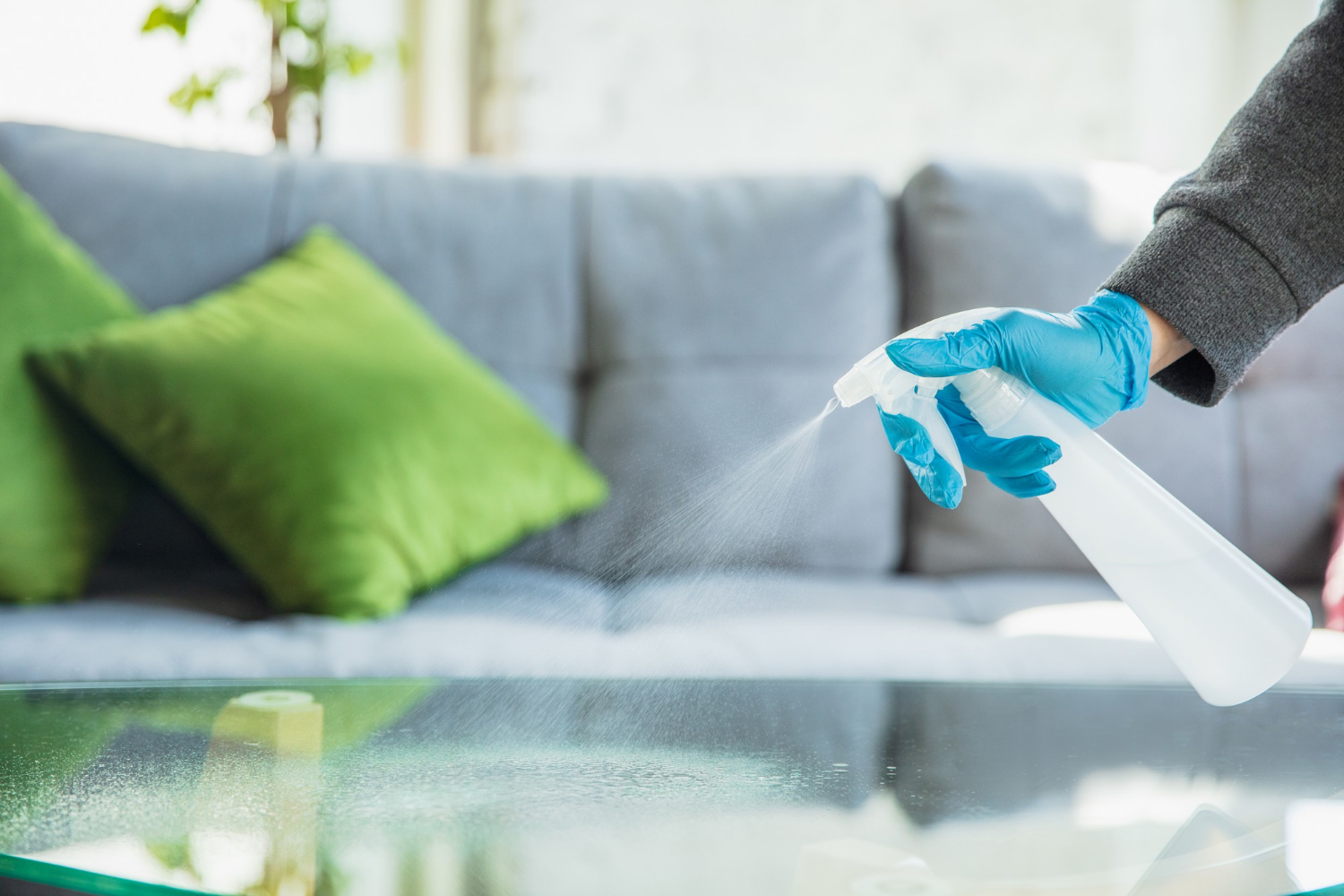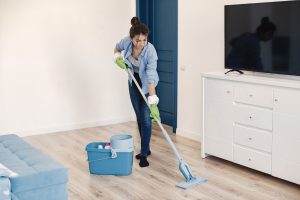This information provides guidance on how to safely clean rooms in non-health accommodation where persons have been in isolation following infection with COVID-19 or in quarantine because they have had potential exposure to an infected person.
Basic facts
- The virus that causes COVID-19 is spread by respiratory droplets generated when people with
COVID-19 infection cough and sneeze. The droplets can lead to infection in people who are
in close contact. The droplets can also contaminate surfaces, where other people can pick
the virus up. - The COVID-19 virus can live for several days on some surfaces, such as stainless steel
and plastic, under certain conditions. Sunlight, humidity and temperature can influence how
long the virus survives in the environment. - The virus can easily be destroyed through cleaning with a neutral detergent and a
disinfectant (see Cleaning products section below).
Guidance for cleaning used rooms
- Cleaners should not enter a room for cleaning while the person in isolation or quarantine is
in the room. - Before entering the room for cleaning, cleaners should wait at least 60 minutes after the person in isolation or quarantine has left the room. This will ensure that any droplets have settled.
- Where able, windows, curtains and doors to balconies should be opened during cleaning.
- All areas that are normally cleaned should continue to be cleaned.
- Ensure frequently handled items, such as remote controls, air conditioning controls, light switches, door handles and drawer/cupboard handles, are thoroughly cleaned.
- The room should be allowed to air dry before being used again.
- Soft furnishings, such as lounges, chairs and bedheads, should be vacuumed. If more intensive cleaning is required use steam cleaning.
- Linen should be bagged before being removed from the room but does not require special laundering.
Personal protection for cleaning staff
- Cleaning staff should wear the following personal protective equipment (PPE):
- Disposable face mask (surgical mask)
- Single use latex or vinyl gloves
- Eye protection (goggles or face shield)
- A disposable plastic apron should be used to avoid any contamination of clothes.
- The purpose of PPE is to minimise direct contact with surfaces and to protect the eyes, nose and mouth from splashing and dust generated while cleaning as well as from any chemicals used in the cleaning process.
Tips for using PPE safely and effectively:
- Once you have entered the guest room, don’t adjust your face mask or eye protection and avoid touching your face.
- If you are immediately going to clean another room of a person who is in isolation or quarantine, you may leave your eye protection and face mask on until the rooms are cleaned. You should remove and replace your gloves and apron between each room clean.
- Your mask should be either on or off completely and not dangle from your neck. Ensure your mask always covers both your nose and mouth.
- Ensure disposable PPE is immediately disposed of after use in a single use bag, tied securely and placed in the general waste.
- Care should be taken when removing PPE as the outside may be contaminated:
- Peel back your gloves first and ensure the outside of the gloves does not touch anything.
- Remove your apron next, ensuring you do not touch the front of your apron with your hands.
- Wash your hands immediately after removing gloves and apron.
- Before you remove your mask or eye wear always wash your hands and do this again once you have removed and disposed of the mask/eyewear as all PPE should be considered contaminated.
- When you remove your mask, do not touch the outside of the mask.
- Hands should be washed with either soap and water for a minimum of 20 seconds or use
alcohol-based hand sanitiser.
Cleaning products
Cleaning of hard surfaces should be done using either:
- a cleaning and disinfection procedure in two steps:
first clean with a detergent, then follow with a disinfectant listed by the Therapeutic Goods Administration (TGA) with specific claims against COVID-19 or a 1:1,000PPM sodium hypochlorite solution. - a 2-in-1 step process:
use a product that cleans and disinfects at the same time. Any hospital-grade TGA-listed disinfectant that has specific claims against COVID-19 is suitable if used according to manufacturer’s instructions.
Disinfectant solutions should be made fresh daily and gloves should be worn when handling and preparing solutions. Cleaning equipment, including mop heads and cloths, should be laundered in hot water and completely dried before reuse. Cleaning equipment, such as buckets, should be emptied and cleaned with a new batch of cleaning and/or disinfectant solution and allowed to dry completely before reuse.
Preparation of bleach solutions
Household bleach comes in a variety of strengths of the active ingredient (sodium hypochlorite) and you can find this information on the product label often listed as available chlorine.
Table 1. Recipes to achieve a 1,000ppm bleach solution
| Original strength of bleach (available chlorine) | Disinfectant recipe to make up 1 litre of bleach solution. In a bucket, place the volume of water required and gently add the measured volume of bleach. | |
|---|---|---|
| % | Volume of bleach | Volume of water |
| 1 | 100ml | 900ml |
| 2 | 50ml | 950ml |
| 3 | 33ml | 967ml |
| 4 | 25ml | 975ml |
| 5 | 20ml | 980ml |
Waste handling
Waste from a household, or waste from a hotel or motel where someone with confirmed, probable or suspected case of COVID-19 infection is living or staying, is not regulated as medical waste under the Queensland Environmental Protection (Waste Management) Regulation 2000. However, it is still important that waste from these places is handled with caution before throwing away.
Personal waste, such as used tissues, packaging, masks and disposable cleaning supplies should be put securely inside disposable rubbish bags in the same room as the person with confirmed, probable to suspected COVID-19 infection.
When dealing with waste, avoid touching the inside of the bag. Make sure the rubbish bag is not completely full, so the contents don’t overflow and use two bags if the contents are wet in case it leaks.
This waste can be put with other general rubbish (not recycling or green bins) for your normal rubbish pick-up.
Rubbish bins inside the house should be kept clean and disinfected regularly. If a pedal bin or plastic bucket is used, it is a good idea to use a bin liner. Bin liners stop the bin from getting dirty, help with taking the rubbish out and also help with cleaning and sanitising the bin.
It is important to always wash your hands well and dispose of any personal protective equipment after handling waste.


